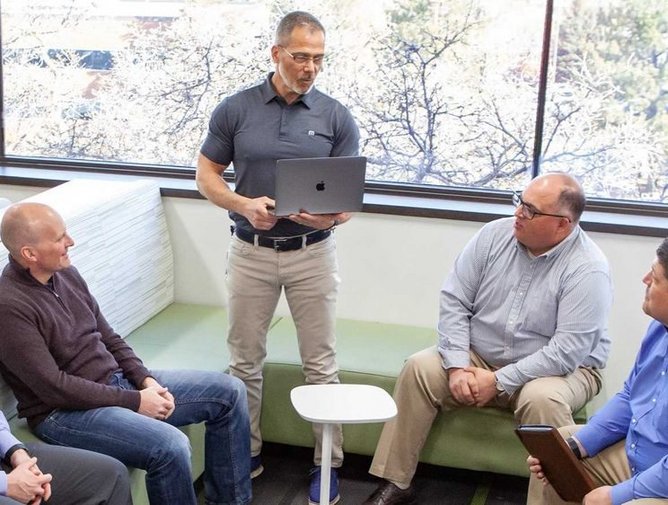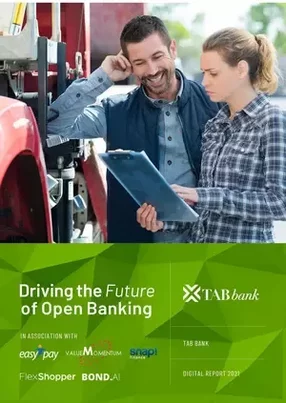Transporting vital goods to consumers and connecting businesses that are sometimes thousands of miles apart, trucking is the lifeblood of the United States. For those who have never driven a semi-truck and trailer, the industry evokes iconic images of impressive chrome-tipped cabs, and of hardworking men and women glued from dusk till dawn to the painted lines of the nation’s highways. But the day-to-day reality is, of course, more nuanced; it is an industry brimming with unique financial complexity. How do truckers, forever on the move, receive their hard-earned paycheques? How do they access funds to fuel their trucks or acquire loans to buy their semi-trucks and trailers in the first place? And more importantly, how do they find a bank that understands them and their distinct needs?
Founded in 1998, TAB Bank set out to answer those questions. Known in the early days as the Transportation Alliance Bank, its suite of financial services for businesses and individuals were tailored to truckers from day one, earning it an impressive reputation and loyal customer base within the industry and beyond. That the bank remains a small financial organisation by definition belies the scale of its ambition and the enormous positive impact it has on the lives of its customers.
Flanked on either side by model trucks in his office in Ogden, Utah - TAB Bank’s central and only location - Chief Operating Officer Mike Palmer strives everyday to uphold that original vision. “When you’re dealing with people’s money and their financial lives, it’s emotional,” Palmer says. “It has a huge impact on everything that they do, how they live, and even how they see the world. And so doing that well, doing it right, is very important to me and the people that I work with.”
Doing it right for a relatively niche customer base such as truckers means understanding the realities of their lives and their financial situations. To highlight the point, Palmer points to the ‘guaranteed check’, a form of one-off payment run by third parties that is generally used to pay truckers performing a single job for a different company. TAB works with these third parties to ensure their customers can deposit these cheques directly into their TAB account - a seemingly small service that in fact has a major positive impact on the lives of its customers. “They haven't got this guaranteed cheque having around that they've got to wait to deposit at their hometown bank when they get home,” Palmer says. “We can get money in their account. They can fuel their truck again and keep moving goods across America.”
TAB’s deep ties to the trucking industry stretch back more than two decades, but much has changed in the intervening years both in trucking and the wider financial landscape. Now the bank is undergoing a dramatic digital transformation to bring ‘EU-style’ mobile banking to its customers across the US and expand its customer base beyond transportation, an initiative that has been in the works for some time.
“I would say we’re right at the cusp of being able to take advantage of the investments we've made over the last several years,” says Palmer. Led by TAB’s president Curt Queyrouze, described by Palmer as a “brilliant banker and futurist”, the executive team took a step back to reassess how best to organise data, how that data can enhance the customer experience, and what underlying hardware and resource investment would be vital to realising their grand vision. These are lessons TAB learned from the European Union, which Palmer believes picked up the data-driven baton from the US and ran it in the right direction.
“In the United States we were famous for using data to retain and control our power in the marketplace - and I don’t think that we really even did a really great job of it,” he says. “Then organisations in the European Union came through and began opening this data up, and allowing people access to it within the banking system. I think what we've learned in the States is that there is a way to make this work and be profitable, provide a great customer experience, and make everybody better off.
“What that means is making all the information that you have directly available to customers, and giving them access to it in the way that they want. A lot of the legacy online and mobile banking platforms in the United States are very inflexible,” Palmer says.
Using open banking has empowered TAB to fine tune and tailor its new platform, as well as partner with market leaders to expedite the process of bringing it to market.
“We’re headed to that real open platform, with functionality that even allows customers to drop and drag widgets and other useful things like that,” Palmer continues. “If I'm a small business owner and I want to see all the cheques that are clearing that day, or the transactions that are going to post, I can move that to the top. Or maybe I'm a consumer, and I am always worried about my balance because I'm living paycheque to paycheque, so I want that to flash to the top of mind. That’s efficient and effective for our customers, whether they are consumers or small business, and our hope is that by introducing these new services - and more in the future - we will drive engagement with TAB Bank, and customers will realise, ‘This is where I can really live my financial life’.”
Partners have been vital to realising TAB’s ambitions. On the backend, partners including MuleSoft and ValueMomentum worked with TAB’s internal teams to build the robust mid-layers that bridge the gap between customers, their information and TAB’s suite of services. On the frontend, TAB leveraged Technisys’ Cyber Bank platform.
“These are tremendous partners that we've had tremendous success with,” Palmer says. “And then we have some very, very talented people here at TAB Bank, from developers to UI/UX specialists who work to tie all these things together. I'm very excited about what we're going to be able to deliver to the market here in the first quarter.”
Developing this open banking platform will allow TAB to partner with fintechs to provide banking services to their customers in a way fintechs want to. “Providing everything from a customisable customer interface to the back-end core system was a goal from the beginning,” Palmer explains. The way everything ties together allows partners to decide which pieces they need to go to market.
For Palmer, however, TAB Bank remains an organisation concerned with people and making lives better. Setting technology and digital transformation to one side for a moment, he says the overarching aim is to give customers a “more complete financial picture”, tying in all the disparate strands of their incomings, outgoings and debt. He paints the picture of a customer that banks with TAB Bank, but who took advantage of a good car loan at a dealership in Kentucky, and whose mortgage is with a major national lender. TAB’s new platform aims to unify all this data in order to understand each individual and begin offering recommendations on everything from insurance to mortgage rates or investment.
“We will be able to say, ‘Here are some steps you can take to make your family more secure, what your upcoming business expenses are, make your financial picture better, and head in the right direction to get to where you want to be, wherever that is,” Mike says. “That’s really where I hope we are in 18 to 24 months. It's a Herculean effort to try to get there, and we've got a lot of work to do, but I'm cautiously optimistic.”




